It’s not about the beach. Northeastern’s Alternative Spring Break teams help communities across the globe

It was a well-oiled machine on the second day of volunteering at Community Servings in Boston’s Jamaica Plain neighborhood. Students lined up alongside stainless steel benches, sorting, bagging and packaging items for individualized meals.
Inside, one container included oatmeal, an orange, a sandwich, cookies and an apple.
It’s a “tight system,” says Laila Viklund, a second-year political science and philosophy major at Northeastern.
Some students are carrying 11 bags at a time. “We are all getting the hang of it,” Viklund says. Plus, she says, “there’s always a task to do, which is good.”
Alternative Spring Break teams include about 10 students who learn about social issues affecting the community and support an organization’s effort to address those social issues. About 90 students are participating in this year’s program.
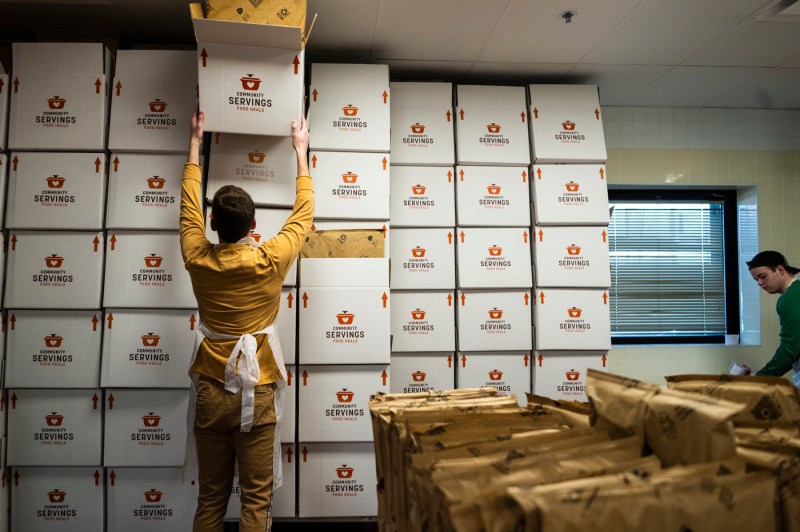
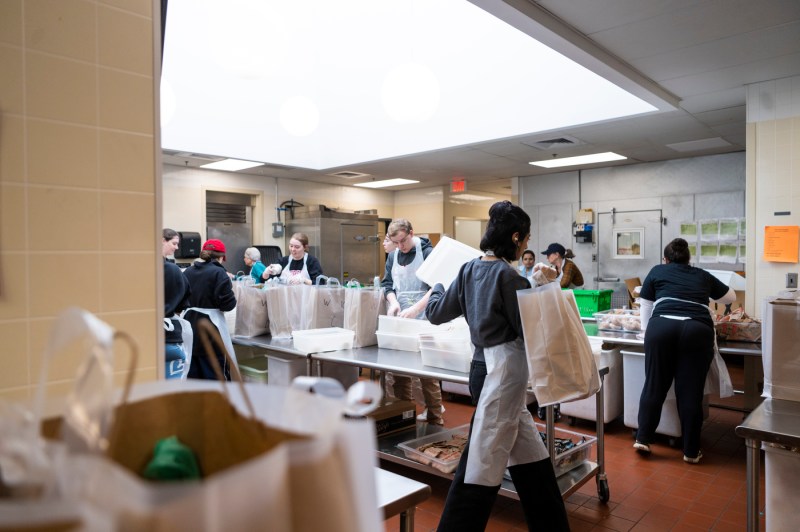
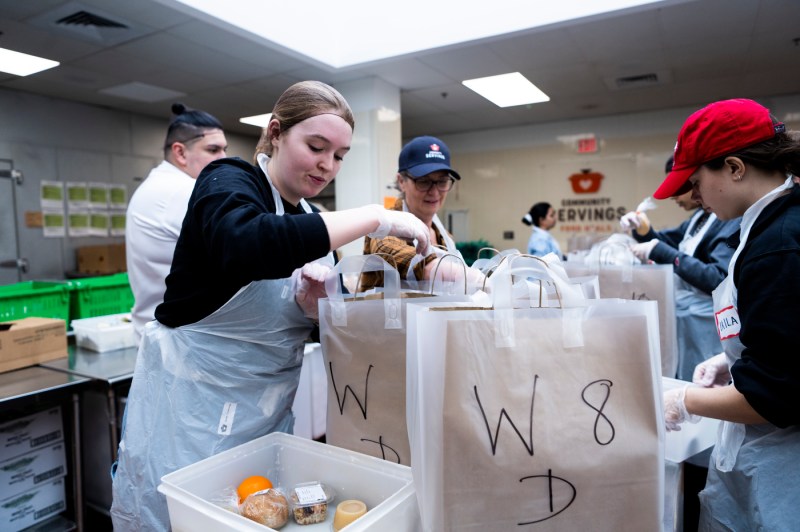
Other trips this year include working with Community Missions in Niagara Falls, New York, where students are supporting housing security in the region. Students are also getting their hands dirty with some trail work with the American Hiking Society in Wildersville, Tennessee.
Teams also went to Washington, D.C., Seattle and Tucson, Arizona, as well as Killeen, Texas. In addition, international programs brought students to the Dominican Republic and Ecuador.
A fund has been set up to help students with participation.
“Each trip is very unique,” says Amanda Mangano, a student alternative break coordinator.
In their free time, the students also have plenty of time for fun activities and exploring the places they are visiting, Mangano says.
When Mangano visited the Dominican Republic, the students went snorkeling and visited a women-run chocolate facility. This year’s trip to Boston went to the MFA. Each location, she says, has its perks.
“I think that’s special; we don’t pick it for them,” Mangano says. “They get to do their research and see what their group will enjoy most.”
Even though the students are dealing with challenging community needs, they also recognize the community has a lot to offer and that there is a lot to explore and learn from, says Erin Curley, the assistant director of the Community Service Programs at Northeastern.
“I think the students are more engaged when they come back,” Curley says. “They care more about community, and they care more about an issue, … there’s a different level of engagement with students outside of the spring break program.”
Northeastern’s community service and civic engagement department also provides Alternative Breaks in the fall, which are weekend service trips.
In Boston this week, volunteers spent the week in the Community Servings kitchen. The nonprofit provides healthy food to people with chronic or critical illnesses, such as HIV/AIDS, diabetes, cancer and kidney disease. Each meal is tailored to 15 different medical diets and serves clients and their families throughout the state.
“I really like working here,” says Noor Mehta, a third-year student majoring in internal affairs and cultural anthropology. So far, the experience has taught them about the logistics of putting together specific meals with different dietary restrictions. The method they use, Mehta says, is “very impressive.”
Mehta decided to join the alternative spring break because it allowed them the flexibility to do something fun while prepping for the LSAT.
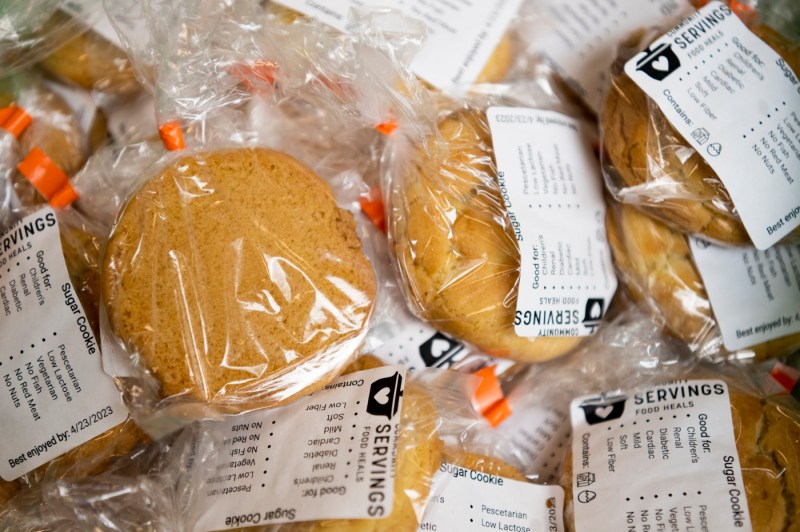
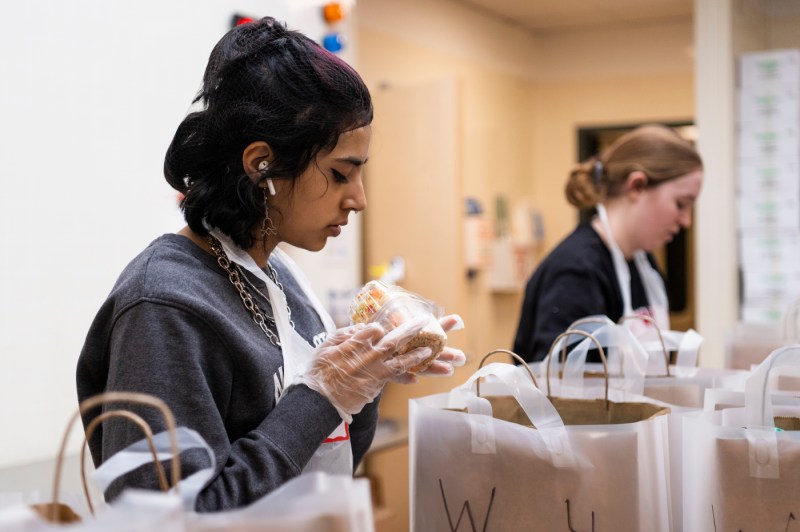
Ella Bentley, a second-year student studying business administration and sociology, lives close by and has no other plans for spring break. She noted volunteering was better than sitting at home and watching a screen all week.
Last year she volunteered at a farm, which was a bit more hands-on but taught her about where food comes from and food insecurity––a lesson she continues to grow here at Community Servings.
The assembly line changes every 30 minutes depending on what kind of meal they are packaging, says Viklund. For example, the current line was for cardiac fitness.
At the end of the assembly, the meals move into a freezer before being sent to the community. On Monday, the team helped put together 2,500 meals.
Carina Davis, a second-year student studying industrial engineering, was busy filling bags with containers specified for no fish. Every few seconds, she pushed bags down the line, ready for the next item.
It was her second day working on this task, and she was already a pro.
At the end of spring break, Davis says, she plans to return to volunteer.
Davis enjoys working alongside volunteers who have been coming for years. “The volunteers love what they do and come every day.”
Beth Treffeisen is a Northeastern Global News reporter. Email her at b.treffeisen@northeastern.edu. Follow her on Twitter @beth_treffeisen.





